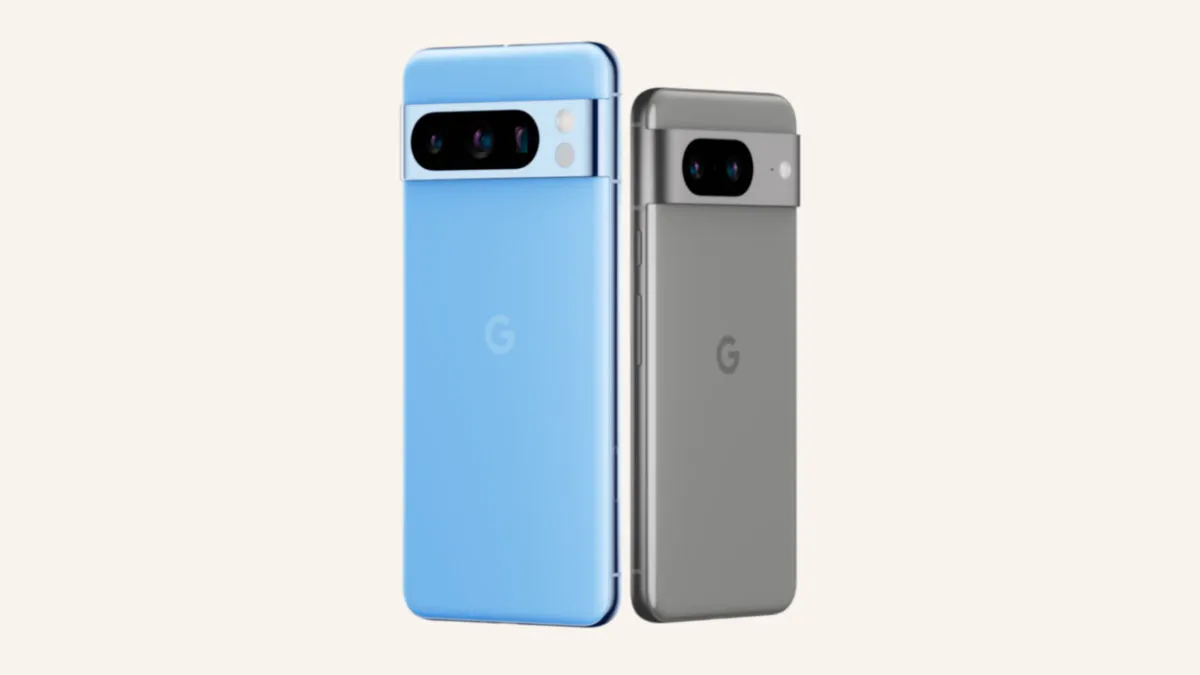Introduction
Since their inception in 2013, Google Pixel phones have symbolized innovation and advancement in the smartphone industry. The recent unveiling of the Pixel 8 and Pixel 8 Pro at the annual Made by Google event on October 4, 2023, marks a continuation of this legacy. Google Pixel 8 and 8 Pro Released on October 12, these devices embody Google’s dedication to seamless hardware and software integration. Powered by the third-generation Google Tensor system-on-chip, they bring to the forefront Google’s expertise in AI-driven functionalities, especially in photography and generative AI. Critics have lauded these phones for their sophisticated balance of innovation and practicality, accentuated by Google’s promise of seven years of
software updates. The Pixel 8 Pro’s unique temperature sensor stands out as a particularly intriguing addition, stirring discussions in the tech world.
Google Pixel 8 Pro The Bigger, Smarter Sibling
Following its release in October 2023, the Google Pixel 8 Pro stands as a paragon of advanced smartphone technology. Weighing 213g and 8.8mm thick, it boasts a 6.7-inch LTPO OLED display with a 120Hz refresh rate and HDR10+ support. The Google Tensor G3 chipset under its hood, complemented by Android 14, ensures top-tier performance. Storage options are ample, ranging from 128GB to a massive 1TB, paired with 12GB of RAM.
The camera system of the Pixel 8 Pro is particularly noteworthy. It features a 50MP wide lens, a 48MP telephoto lens with 5x optical zoom, and a 48MP ultrawide lens. Photography is elevated with features like Ultra-HDR and Pixel Shift, making it a powerhouse for both photography enthusiasts and professionals. Additional premium features include IP68 water/dust resistance, UWB support, and an innovative thermometer. The device is powered by a 5050mAh battery, supporting 30W wired and 23W wireless charging. Available in Obsidian, Porcelain, and Bay, the Pixel 8 Pro is a blend of luxury and functionality.
Google Pixel 8 Your New Tech Companion
The Google Pixel 8, with its release date on October 12, 2023, epitomizes the essence of a flagship Android smartphone. Its design, featuring Gorilla Glass Victus and an aluminium frame, exudes both elegance and resilience. The device, weighing 187g and with an 8.9mm thickness, hosts a 6.2-inch OLED display that offers a 120Hz refresh rate, HDR10+ support, and a peak brightness of 2000 nits. Powered by the Google Tensor G3 chipset and running on Android 14, it assures unparalleled performance.
Camera-wise, the Pixel 8 doesn’t disappoint. Its dual rear camera setup includes a 50MP wide lens and a 12MP ultrawide lens, equipped with Pixel Shift and Ultra-HDR capabilities. The 10.5MP front camera supports 4K video recording, ensuring high- quality selfies. The absence of a 3.5mm jack is mitigated by its stereo speakers, which provide exceptional audio quality. The Pixel 8 operates on a 4575mAh battery, supporting 27W wired, 18W wireless, and reverse wireless charging. Available in Obsidian, Hazel, and Rose, the device melds aesthetic appeal with cutting-edge technology, offering a premium Android experience. The Google Pixel 8 price in Australia is competitive starting from A$1,199, making it an attractive option for many users. The Google Pixel 8 is competitively priced in Australia, starting at A$ 1,199, making it an appealing choice for many users. Alternatively, opting for a refurbished Google Pixel 8 from Phonebot could provide a cost-effective option, starting from A$879.
Google Pixel 8 Pro vs. Pixel 7 Pro The Upgrade
When contrasting the Pixel 8 Pro with its predecessor, the Pixel 7 Pro, notable advancements come to the forefront. The Pixel 8 Pro’s design exudes sleekness, and its display, boasting a higher pixel density, delivers a more immersive visual experience. In terms of performance, both devices are powered by the Google Tensor G3 chipset and operate on Android 14, but the Pixel 8 Pro leaps forward with its upgraded RAM and diverse storage options. The Pixel 8 Pro’s camera system, featuring a triple rear setup with cutting-edge capabilities, stands out against the Pixel 7 Pro’s dual-camera configuration. Furthermore, the Pixel 8 Pro showcases improved battery capacity and charging capabilities, solidifying its position as a worthy successor to the Pixel 7 Pro.
Google Pixel 8 vs. Pixel 7 What’s New?
When comparing the Pixel 8 to its predecessor, the Pixel 7, several advancements become evident. The Pixel 8’s design is sleeker, and its display, with a higher pixel density, offers a more vivid visual experience. Performance-wise, both devices are equipped with the Google Tensor G3 chipset and run on Android 14, but the Pixel 8 offers improved RAM and storage options. The camera system of the Pixel 8, with its advanced features, outshines the Pixel 7’s dual-camera setup. Battery and charging capabilities are also enhanced in the Pixel 8, making it a worthy successor.
Wrapping Up
In summary, the decision between the Pixel 8 series and its predecessors hinges on individual preferences. For those seeking the latest technology and cutting-edge features, buying Pixel 8 or 8 Pro is the optimal choice. However, if reliability and robust performance suffice, the Pixel 7 series stands as a solid alternative. In the context of Google’s latest Pixel 8 series, whether you’re a tech enthusiast or simply desire a phone at the forefront of innovation, They’re not just phones; they’re like little pieces of the future in your pocket!
So, Choosing a Google Pixel phone involves a careful balance of factors, spanning pricing, security, software experience,
camera capabilities, battery life, and 5G support. Tailoring your choice by considering hardware specifications and exploring cost-effective alternatives like it’s worth exploring even more reasonable prices through options such as refurbished Google Pixel phones, allows you to find a device that seamlessly integrates with your preferences and the evolving landscape of mobile technology.






